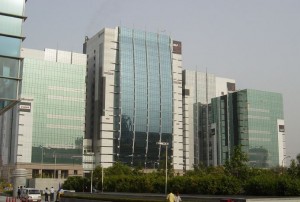An uneasy synthesis of first and third worlds, Gurgaon, India, is a city with a booming economy and almost no basic services. Lacking both the benefits and encumbrances of central government, Gurgaon is a place with a couple dozen gleaming shopping malls and also one where citizens have to improvise their own means of trash disposal. It’s laissez-faire taken to its fullest expression. Jim Yardley has a great new article in the New York Times about the city where everyone is on their own. The opening:
“In this city that barely existed two decades ago, there are 26 shopping malls, seven golf courses and luxury shops selling Chanel and Louis Vuitton. Mercedes-Benzes and BMWs shimmer in automobile showrooms. Apartment towers are sprouting like concrete weeds, and a futuristic commercial hub called Cyber City houses many of the world’s most respected corporations.
Gurgaon, located about 15 miles south of the national capital, New Delhi, would seem to have everything, except consider what it does not have: a functioning citywide sewer or drainage system; reliable electricity or water; and public sidewalks, adequate parking, decent roads or any citywide system of public transportation. Garbage is still regularly tossed in empty lots by the side of the road.
With its shiny buildings and galloping economy, Gurgaon is often portrayed as a symbol of a rising ‘new’ India, yet it also represents a riddle at the heart of India’s rapid growth: how can a new city become an international economic engine without basic public services? How can a huge country flirt with double-digit growth despite widespread corruption, inefficiency and governmental dysfunction?”
Tags: Jim Yardley

